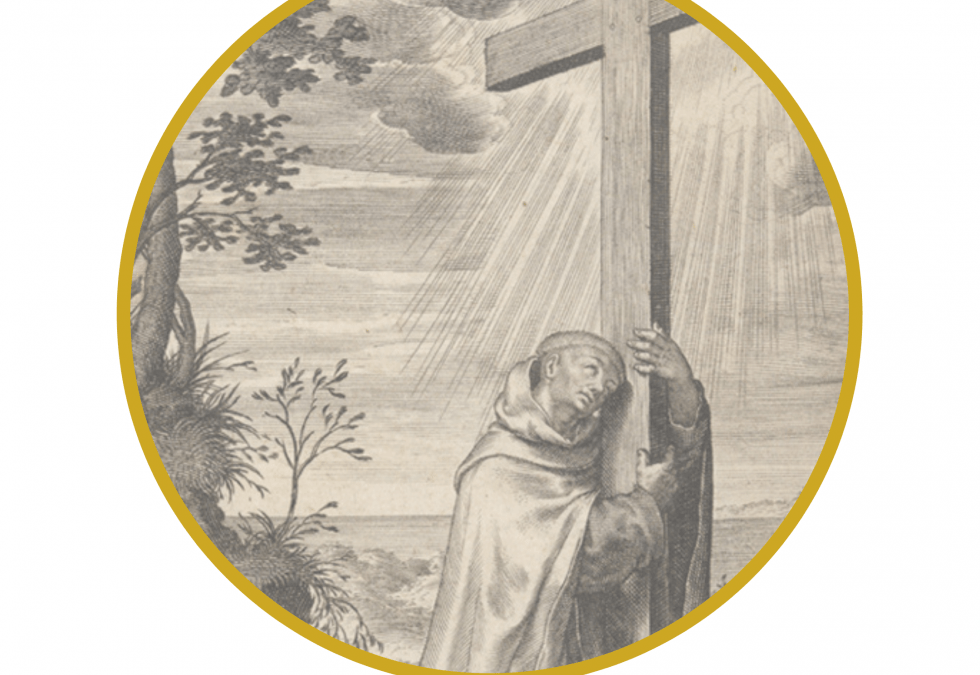
by popadmin | Dec 12, 2021 | CIC Saint Writeups
14 December: Saint John of the Cross. Born in 1542 as Juan de Yepes, he was the son of a poor silk weaver in Spain. His father was of noble birth but had married much beneath him and thus had been cut off by family. He had taken to silk weaving as a means of livelihood, but had never been able to make much of it. Soon after the birth of Juan, he died. The family was left in dire poverty; the children grew up always underfed, so much so that to the end of his life, Juan remained dwarfed in stature. Unable to learn a trade, he became the servant of the poor in the hospital of Medina, while also pursuing sacred studies. In 1563, Juan became a lay-brother to the Carmelite friars, who had him ordained priest. St. Teresa of Avila then strongly persuaded him to help her reform the Carmelite Order. Together they founded the Discalced (meaning “barefoot”) Carmelites, an order devoted to service of the Blessed Mother through prayer and penance. He took the name “John of the Cross.” His reform of the Carmelites, though approved by the general, was rejected by the elder friars, who condemned him as an apostate, and cast him into prison. He escaped after nine months of suffering (being beaten and nearly starved to death). Twice again, John was persecuted by his brethren and publicly disgraced. This only deepened his interior peace and devout longing for heaven. He had a great devotion to Our Lord’s Passion and voluntarily sought out humiliations. When Our Lord asked him what reward he would ask for his labors, John answered: “To suffer and to be despised for Thee.” On December 14, 1591, John was dying of a painful infection at only 49 years old. He asked to have “Song of Songs” read to him. While listening, he was heard to say, “So beautiful are the flowers!” And then he died. St. John was a great contemplative and spiritual writer. His mystical poems on divine love are considered some of the greatest verses ever written in the Spanish language. Among the Church’s contemplatives, St. John is known as a master of mystical theology and has had a great influence on Catholic spirituality. Saint John of the Cross was beatified by Pope Clement X in 1675; canonized by Pope Benedict XIII in 1726; and proclaimed Doctor of the Church by Pope Pius XI in 1926. He is the patron of contemplative life, mystical theology, mystics, and Spanish poets.
“With what procrastinations do you wait, since from this very moment you can love God in your heart?”
(Excerpt from Prayer of a Soul Taken with Love — St. John of the Cross)
Ideas for celebrating this feast day at home:
- A Spanish-inspired dinner would be perfect for St. John’s feast day. Try this easy recipe for Spanish rice with beef. Other ideas would be gazpacho soup, tapas, or a Spanish paella!
- In honor of the Carmelite order, make a caramelized treat for dessert: caramelized brown butter rice krispies or homemade caramel candies
- John was a prolific writer and poet. Today, ask children to write a small poem in honor of Christ or the Cross. These little poems of faith could be placed in the Christmas manger as a gift to Jesus.
- Three of St. John’s works, Ascent of Mount Carmel, Dark Night of the Soul,and Spiritual Canticle of the Soul and the Bridgegroom Christ are available online at the Christian Classics Ethereal Library.
- Reflect on the following sayings from St. John of the Cross: “In the evening of your life you will be judged by your love.” / “Where there is no love, put love and you will find love.” / “Keep your heart in peace; let nothing in this world disturb it; everything has an end.”
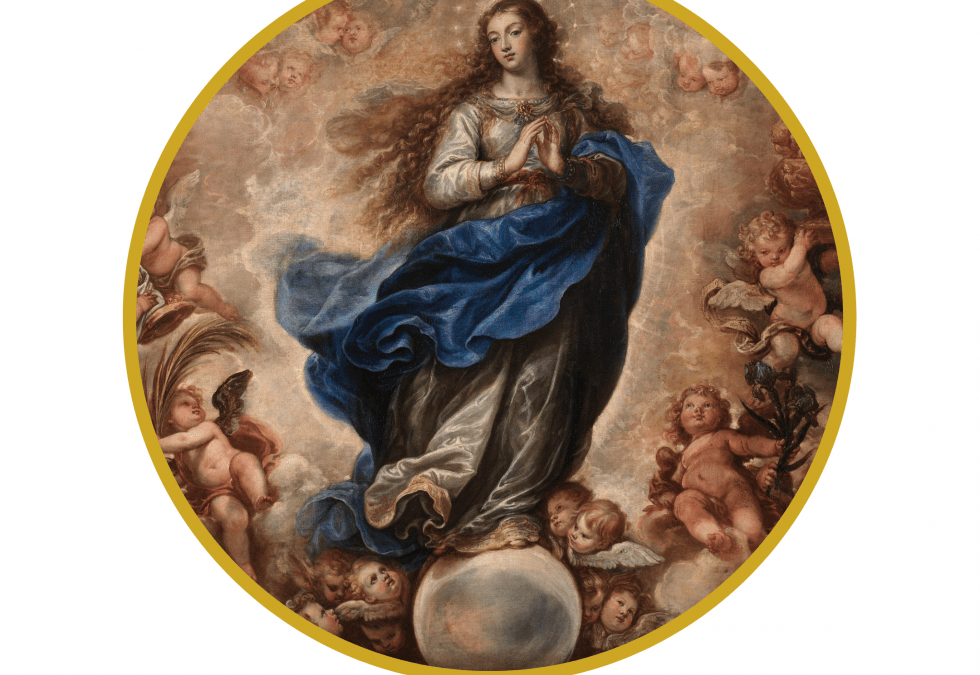
by popadmin | Nov 30, 2021 | CIC Saint Writeups
8 December: Solemnity of the Immaculate Conception of the Blessed Virgin Mary. On this feast day, we celebrate the wondrous moment when the Blessed Virgin began her existence in this world. God allowed her to be conceived without sin in the womb of her mother, Saint Anne. Blessed Mary had the sublime privilege, alone among all human beings and in virtue of the future merits of Christ, of being preserved at the very first moment of conception from the stain of original sin. Mary remained pure from all personal sin throughout her life. Although it falls in the month of December, this great feast does not have any special relationship with Advent. It was fixed on December 8 in order to separate the feast by nine months from the date of the Nativity of the Blessed Virgin (Mary’s birth day) on September 8. However, in celebrating this feast we may easily enter into the spirit of Christmastide, for Mary draws us ever closer to her son, Jesus. Mary is our hope, guide, and mother along the path of salvation. The Immaculate Conception is the Patroness of the United States. How often our Holy Father has stated in recent years that the hope of peace in the world does not lie in force of arms, but rather in prayers and recourse to the intercession of Our Lady. This feast day provides the perfect opportunity for a renewal of love for our country and true devotion to Our Blessed Mother.
Ideas for celebrating this feast day at home:
- Go to mass: the Solemnity of the Immaculate Conception is a holy day of obligation. Have older children listen carefully for references to the doctrine of the Immaculate Conception, not only in the readings and homily, but also in the prayers during the liturgy of the Eucharist.
- Get Patriotic! Our Lady is the Patroness of the United States of America under her title of the “Immaculate Conception.” This is a good month to place an American flag on your home altar or near your statue or picture of Our Lady, and ask for Mary’s intercession for the USA.
- Wear a miraculous medal and make a home display honoring Mary. The miraculous medal bears these fitting words, “O Mary, conceived without sin, pray for us who have recourse to thee.”
- Set your dinner table with a white cloth, white candles, good dishes, and white roses. Place a picture or statue of Mary as the centerpiece.
- To celebrate the sin-less-ness of Mary, how about a WHITE dinner! Ideas: white fish with rice; creamy chicken alfredo with sourdough bread; roasted cauliflower with cheese sauce. Serve it all with a tall glass of white milk!
- Dessert is the fun part! Enjoy a white cake or cupcakes with white icing, vanilla ice cream, meringue cookies, or an angel food cake topped with whipped cream.
- Gather after dinner to read an advent or Marian book aloud to your children. Finish the night by praying a family rosary together.
- Invoke the intercession of Saints Anne and Joachim, parents of our Blessed Mother: pray one of these prayersor novenas to Jesus’s Grandparents.
- Pray a Marian prayer: There are many Marian prayers that you can pray with your kids on the Solemnity of the Immaculate Conception. Ave Maria Stellisis a beautiful song that is traditional to this feast. The Hail Mary and Hail, Holy Queen are basic Marian prayers that are good for kids to know by heart. And the Magnificat, Mary’s own prayer and her longest speaking part in the Bible, is a wonderful prayer for any Marian feast day.
- Service project: make this “Treat a Pregnant Lady” day! There are so many little things that make a day easier for a pregnant mom: taking toddlers for a bit to give mom a break; drop off a meal; etc. If you don’t know a pregnant mom, perhaps take a donation to a local pregnancy crisis center. This feast day provides a great opportunity to transform faith and teaching into good works – teaching children to put their faith into practice.
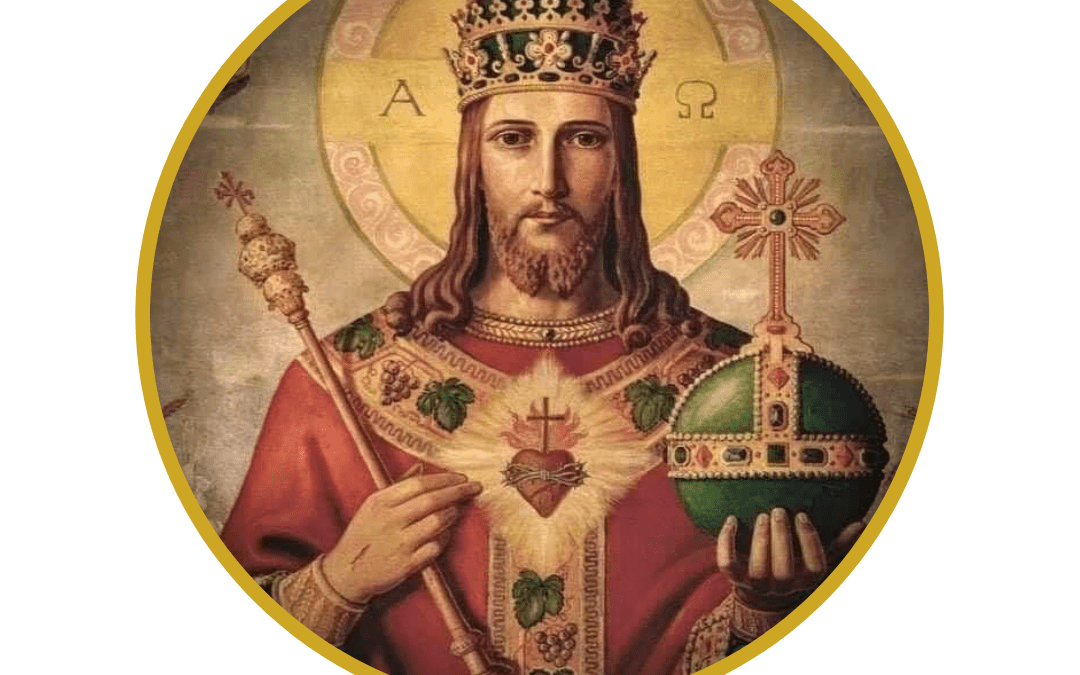
by popadmin | Nov 21, 2021 | CIC Saint Writeups
21 November: Feast of Christ the King (the Solemnity of Our Lord Jesus Christ, King of the Universe). Celebrated on the last Sunday of the liturgical year, this feast day was established by Pope Pius XI in 1925. As a response to the rise of secularization, atheism, and communism in the world and to publicly acknowledge the supremacy of Jesus Christ over all men and nations, Pope Pius XI issued the encyclical Quas Primas. This encyclical added the feast of “Our Lord Jesus Christ the King” to the Church liturgical calendar. It designated the feast to be celebrated on the last Sunday of October. This date, near All Saints’ Day and four weeks before Advent, was carefully chosen. It reminded the people that Jesus Christ is not only King of this world, reigning over the nations; He is also the eternal King, glorified by the saints in heaven, who will one day come to judge humankind. In his encyclical, the pope noted that the world’s disorder was the result of nations rejecting Christ. The pope instructed the faithful to use this annual feast as a time to consecrate themselves to the Sacred Heart of Jesus; tying the celebration to devotion to the Sacred Heart and to the living Christ in the Eucharist. In 1969, Pope Paul VI further enhanced this feast. To emphasize Christ’s universal reign, he changed the feast day name to “Our Lord Jesus Christ, King of the Universe”. He also changed the feast date to the last Sunday in the liturgical year, emphasizing even more strongly the connection between Christ’s kingship and His second advent (coming) to judge the world. Fr. Smith aptly referred to this new feast date as “the crown of Ordinary Time”. The pope also raised this feast to the highest rank of celebration on the Church calendar: that of a solemnity. Today, peace still eludes us; social, political and economic upheaval is still prevalent; and the nations continue to reject the Gospel. The world needs now, more than ever, our Christian witness to Christ the King’s rule over all things.
23 November is the feast day of Blessed Miguel Pro. It is a perfect tie-in to learn the phrase that this Mexican martyr bravely died proclaiming: “Viva Christo Rey!” (“Long live Christ the King!”)
Ideas for celebrating this feast day at home:
- Make crowns! (Or, visit Burger King today!) Here is a link for free printable Christ the King
- An easy Christ the King craft idea here.
- For a fun baking activity, make Christ the King cookie crowns.
- Set the table as if you were hosting a king for dinner: use cloth napkins, your best dishes. Light candles and fill fancy glasses with champagne or sparkling cider. You could also serve adults a Royal Flush cocktail made with Crown Royal.
- Make “Chicken á la king” for dinner: recipe here.
- Other dinner ideas “fit for a king”– a ham ‘jeweled’ with cloves; a crown roast; a very nice steak; or slow braised beef and vegetables with mashed potatoes. For dessert, a crown cake! (recipes here)
- Sing or listen to the hymn “For Christ the King” by Father Daniel Lord, from 1933. The Hallelujah Chorusfrom Handel’s Messiah is another resounding piece of music that captures the enthusiasm of this feast day: “King of Kings and Lord of Lords! And He shall reign for ever and ever.”
- Have a family procession in honor of Christ the King – idea here.
“If to Christ our Lord is given all power in heaven and on earth; if all men, purchased by his precious blood, are by a new right subjected to his dominion; if this power embraces all men, it must be clear that not one of our faculties is exempt from his empire. He must reign in our minds, which should assent with perfect submission and firm belief to revealed truths and to the doctrines of Christ. He must reign in our wills, which should obey the laws and precepts of God. He must reign in our hearts, which should spurn natural desires and love God above all things, and cleave to him alone.” (Quas Primas, Pope Pius XI)
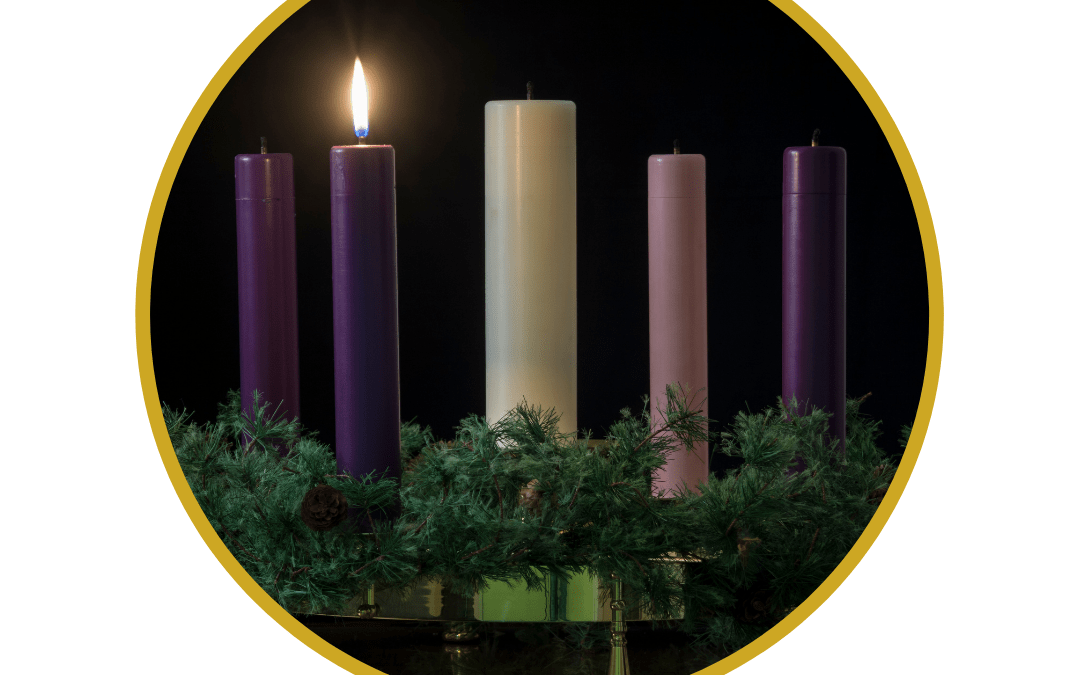
by popadmin | Nov 21, 2021 | CIC Saint Writeups
28 November: First Sunday of Advent. The word Advent comes from the Latin adventus, which means a coming or arrival. Advent is the first liturgical season of the Church Year; it begins today and ends on December 24th. Don’t skip Advent – it’s there for a reason! It is a time of hopeful, joyous preparation for the coming of the Savior. The liturgical colors of Advent are violet and rose. Violet symbolizes penance, preparation and sacrifice. Rose is used on the Third Sunday of Advent, Gaudete Sunday (Gaudete is Latin for rejoice.) The color rose signifies anticipatory joy that the waiting is half over; Christmas is near.
Advent is a time for us to prepare our minds and hearts for Jesus (through prayer, penance, fasting). We think of Advent as a time to prepare for Christmas, or the First Coming of Christ, but it should also remind us to look forward to the Second Coming of Christ.
“When the Church celebrates the liturgy of Advent each year, she makes present this ancient expectancy of the Messiah, for by sharing in the long preparation for the Savior’s first coming, the faithful renew their ardent desire for his second coming. By celebrating the precursor’s birth and martyrdom, the Church unites herself to his desire: “He must increase, but I must decrease.”” (Catechism, 524)
Here are some ideas for how you can celebrate the holy season of Advent. Remember, you don’t have to do it all—just choose a few, and see what blesses your family. The ultimate goal is to use the season of Advent to prepare our minds, hearts, and homes for the birth of Christ.
Ideas for celebrating the season of Advent in your home:
- Advent Wreath: place on your table and light the candles each night. Pray together and sing O Come O Come Emmanuel. Be sure to bless your advent wreath using this blessing.
- Advent Calendar: a wonderful visual for children to count down the days leading to Christmas.
- Jesse Tree: lots of ideas and resources online for this. It is a fantastic way to learn about Jesus’ ancestors and the Biblical events leading up to His birth. Click here for more about the Jesse Tree.
- Nativity Scene: this tradition started by St. Francis is a perfect visual to remind everyone about the meaning of Christmas. Say a blessing over your nativity set and maybe wait to add baby Jesus to the manger until Christmas morning!
- Special Sunday Advent Dinners: fix a special dinner every Sunday in Advent and eat together by candlelight. Read aloud a Christmas story, Saints story, Scripture passage or Advent devotion. Say prayers together as a family.
- O Antiphons: from the Liturgy of the Hours, these antiphons are sung or recited at evening prayer from December 17 to 23, the octave before Christmas. Each antiphon welcomes the birth of the Savior by heralding one of the ancient Biblical titles given to the Messiah (as prophesied in the OT). Click here for the antiphons.
- Las Posadas: this Hispanic tradition reflects on what it was like for Joseph and Mary on the night Jesus was born. This begins on Dec. 16 and continues through Christmas Eve. Click here for more.
- Read Christmas & Advent books to your children: Here and Here are two wonderful book lists!
- Almsgiving and acts of service: good deeds and generosity have always been an important part of preparation for Christmas. Make it a family activity!
- Celebrate Saints’ Feast Days: There are many wonderful feast days during Advent. Click here for a list. You could keep it as simple as reading about the life of the saint over dinner; or make it a more elaborate celebration with ideas you find online.
- Sacrifices for the Christ Child: fill an empty “manger” during the season of Advent – one piece of straw placed for every sacrifice or good deed. Baby Jesus will have a soft manger when he arrives on Christmas from all the good works performed during Advent! Click here for more.
Go to the Sacrament of Reconciliation as a family; pray together; attend mass; do everything you can to prepare your heart and soul for the coming of Our Savior!
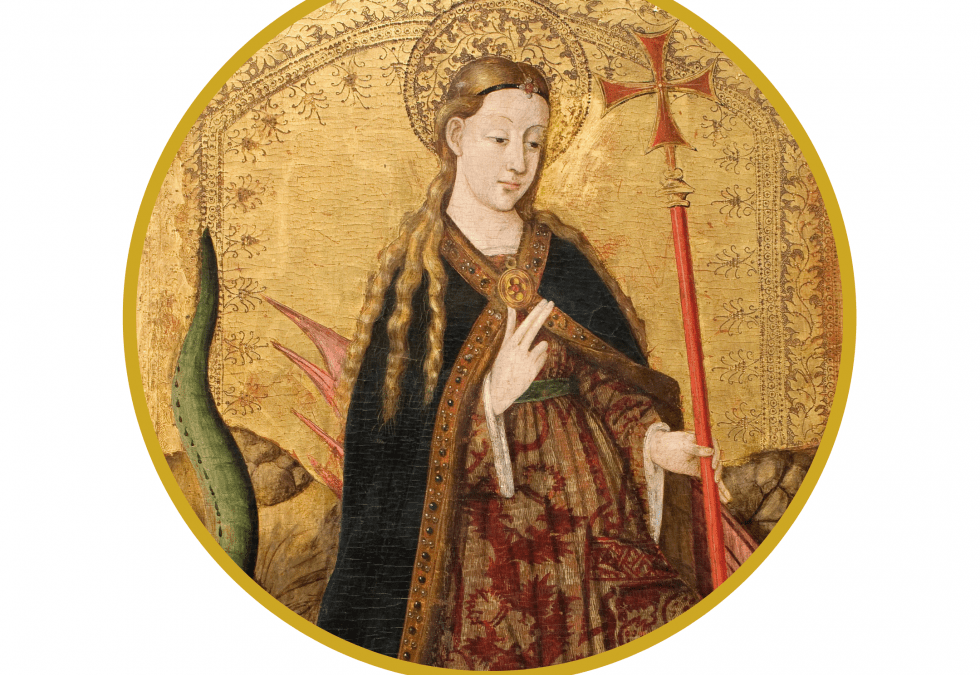
by popadmin | Nov 14, 2021 | CIC Saint Writeups
16 November: Saint Margaret of Scotland. Born in Hungary in 1046, Margaret was the great-niece of Saint Edward the Confessor. She was a Saxon princess, raised in Hungary where her father was living in exile. She spent her childhood there as an unusually devout and pious girl. The family eventually went to England, when her father was called to high office by his uncle, King Saint Edward III. Margaret’s father died suddenly. She and her mother had to flee yet again; this time to the court of Malcolm, the King of Scotland. Upon instructions from her mother, Margaret married King Malcolm in 1069. The country was blessed by her holy life and deeds of charity for the next thirty years. Margaret had eight children and proved to be a model mother and exemplary queen who brought up pious children. She zealously trained her children in the practice of Christian virtues. Margaret also worked hard to improve the morality of her subjects. In the midst of royal splendor, Margaret chastised her flesh by mortification and vigils and often passed the greater part of the night in devout prayer. Her most remarkable virtue was love of neighbor, particularly love toward the poor. Her alms supported countless unfortunates; daily she provided food for three hundred souls and shared in the work of serving them personally, washing their feet and kissing their wounds. Queen Margaret of Scotland is the secondary patroness of Scotland. She is also the patron saint of large families, learning, queens, widows, and the death of children. St. Margaret’s copy of the Gospels is preserved in the Bodleian Library at Oxford University.
Ideas for celebrating this feast day at home:
- Practice the virtue of charity today. Ideas: donate to a charity, buy baby items for a crisis pregnancy center, take a food donation to a food pantry, help in our own parish by giving to the KofC turkey dinner project or to SVdP’s angel tree project to provide toys and coats for children in need ($25 contribution for a warm winter coat for a child in need; $25 for a child to purchase a toy – give online at SVDP)
- Offer your support (even if it is just a little morale boosting) to a mother with young children who is trying to raise her children to love God.
- If you are a mother with young children, pray to St. Margaret to help you imitate her zeal in training her children in the Faith. If you are needing a little boost, read Cardinal Mindszenty’s The Mother.
- Today it might be fun to cook a pot of Scottish soup in honor of St. Margaret who probably cooked many pots of soup herself. (Try making Scottish Tattie Soup!)
- To celebrate St. Margaret, making a crown cake (denoting her rank) would be appropriate. Chocolate “coins” wrapped in gold foil could also be enjoyed today in memory of Margaret’s generosity.
Today, 16 November, is also the Feast of Saint Gertrude the Great. Gertrude was a Cistercian nun from medieval times. She was born in 1256 at Eisleben and at the age of five was taken to the convent at Rossdorf. In spite of much ill-health, Gertrude used her exceptional natural talents well; she knew Latin fluently and wrote prolifically. When she was twenty-five years old, Christ began to appear to her and to disclose to her the secrets of mystical union. Obeying a divine wish, she put into writing the favors of grace bestowed upon her. Her most important work, Legatus Divinae Pietatis, “The Herald of Divine Love,” is distinguished for its theology and poetry. How it stimulates love of God can be felt only by reading it; Abbot Blosius is said to have read it twelve times each year. Saint Gertrude was one of the first to have stressed devotion to the Sacred Heart of Jesus. She died in 1302, more consumed by the fire of God’s love than by her fever. Read more about the Life of Saint Gertrude in this book. Learn a prayer in Latin on her feast day. Renew your own devotion to the Sacred Heart of Jesus today.
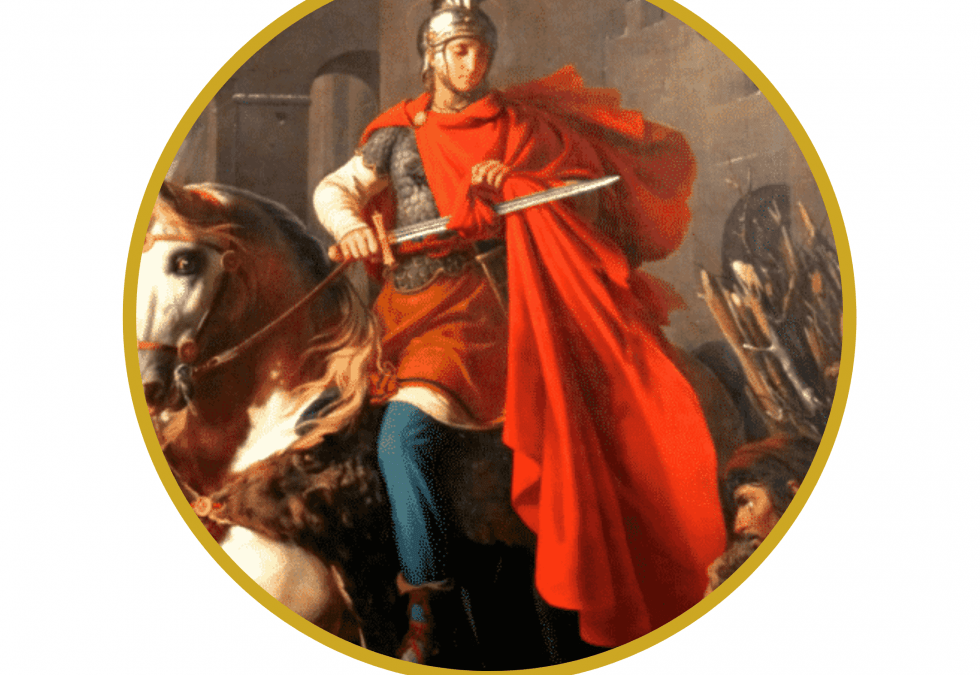
by popadmin | Oct 31, 2021 | CIC Saint Writeups
11 November: Saint Martin of Tours. Born to pagan parents, this son of a veteran was forced at the age of 15 to serve in the army. Martin was baptized a Christian at age 18. He lived more like a monk than a soldier. One of the most famous stories associated with Martin happened while he was in the army: Martin came across a poor, naked beggar at the gates of Amiens who asked alms in Christ’s Name. Martin had nothing with him except his weapons and soldier’s mantle; but he took his sword, cut his own cloak in two, and gave half to the poor man. That night, Christ appeared to him clothed with half a mantle and said, “Martin, the catechumen, has clothed ME with his mantle!” At age 23, Martin refused a war bonus and requested dismissal from the army. He told his commander: “I have served you as a soldier; now let me serve Christ. Give the bounty to those who are going to fight. But I am a soldier of Christ and it is not lawful for me to fight.” He was accused of cowardice and after great difficulty, was discharged. Martin then dedicated himself to God’s work. He traveled to Tours where he began studying under Hilary of Poitiers (a doctor of the Church). Martin was ordained as an exorcist. Martin also became a monk. He established a French monastery near Poitiers. He lived there for 10 years, forming his disciples and preaching throughout the countryside. The people of Tours demanded he become their bishop. Martin did not wish it (was so reluctant that he hid in a barn full of geese which honked loudly and gave him away!!!). He thus reluctantly became bishop of Tours and served faithfully. Along with St. Ambrose, Martin rejected putting heretics to death. He worked against the Arian heresy, paganism, and the Druid religion. He was an extraordinary evangelist and won many to the Christian faith. Once the devil appeared to him and spoke as if he were Christ. Martin recognized the deceit. Three dead persons he raised to life. When he was an old man, Martin fell into a painful fever. Although he longed for Heaven, Martin prayed: “Lord, if your people still need me, I do not refuse the work. Your will be done.” Sick and suffering, he was called to heaven on November 11, 397. Saint Martin is a patron of the poor, soldiers, horsemen, alcoholics, tailors, and winemakers.
Ideas for celebrating this feast day at home:
- Martin’s day, called “Martinmas”, arrives in autumn, the beginning of wine harvest and the time to slaughter winter meat. It is a day for great feasting. Tradition is to have “St. Martin’s goose” and new wine; enjoyed with cakes, figs, fruits, nuts, puddings. Of course, a store-bought rotisserie chicken enjoyed with a good wine and fig cake would also be perfect!
- A symbol for St. Martin is a horse, so horseshoe cookies are traditional. Recipe here. The catch is that you have to give half your cookie away, in honor of St. Martin’s generosity!
- To remind us that we should be a light in the world like St. Martin (bringing light to the beggar), lanterns are a main tradition of Martinmas. Pull out camping lanterns or make your own St. Martin paper lanterns. Free lantern pattern here. Then, have a family procession or “lantern walk” and sing a traditional lantern song for Martinmas. Or, sing around a bonfire with your family!
- Another idea is to string up twinkle lights all over your home: the more light you bring into the world, the better! As you string lights, be sure to remind children that Christ is the “Light of the World” and we are called to shed that light on everyone we encounter.
All of these traditions are based on the fact that St. Martin cut his cloak in half and gave it to a beggar. The perfect way to celebrate this feast would be to help the needy. Participate in a coat drive, donate to a local shelter, help our parish Triune Mercy Kitchen or St. Vincent de Paul as they serve the needy in our own community.






Recent Comments